Remember the 2000s-a golden era when sci-fi movies dared to be bold, bizarre, and beautifully flawed? From cosmic space operas to dystopian death races, these so-called “flopbusters” mixed campy charm with audacious storytelling, creating cult classics that deserve a second chance in the spotlight. It’s time to bring back the wild, weird, and wonderful sci-fi gems that defined a decade of cinematic risk-taking and nerdy excess.
We didn’t know how good we had it in the 2000s. Sure, some things were awful, but the movie industry was something special. Every year felt like it held something new and fantastic: the Bourne movies, Avatar, Gladiator, Lord of the Rings, Pan’s Labyrinth, Lost in Translation, Eternal Sunshine of the Spotless Mind, and Mulholland Drive, just to name a random handful. On top of that, There Will Be Blood, Michael Clayton, Atonement, Juno, and No Country for Old Men were going head to head at the Oscars. And as far as the eye could see, studios were funding ridiculously ambitious, ill-fated sci-fi blockbusters that no one really bothered to watch until they hit cable.
These movies arrived at the perfect moment to be fascinating without necessarily being all that good. Hollywood was ready to spend loads of money on original ideas, and after The Matrix and Star Wars: The Phantom Menace, sci-fi was having a moment. So, inspired by those movies, and smaller, more manageable examples like Alex Proyas’ Dark City and The Crow, directors set out to make their sci-fi dreams a reality. The only problem was that CGI was nowhere near advanced enough for the worlds these creators wanted to build, especially not at the budgets they wanted to build them at. So, an entire microgenre of unashamed, strange blockbusters was born, with high aims, moderate budgets, buckets of creativity, a bit of star power to get the green light from studios, and only the loosest semblance of a script to hold it all together.
The recent release of Paul W.S. Anderson’s tremendously fun film In the Lost Lands felt like a perfect throwback to that era, with its complex mythology of a Christian cult and a ruined world full of magic – made up mostly of brown and gray CGI and anonymous metal beams. Anderson is a master of this particular type of movie (though audiences generally showed up for his Resident Evil movies), and his latest got us thinking with fond nostalgia on this bygone era of bizarre and unique movies.
In that spirit, we put together a list of some of the very best of the 2000s’ (and early 2010s’) overly ambitious sci-fi movies, each one of which bombed – commercially, critically, or both. Despite their failings, though, the “flopbusters” on this list have stuck in our heads and hearts for nearly 20 years, and that alone is a feat worth celebrating.
Ghosts of Mars
Ghosts of Mars, directed by John Carpenter and released in 2001, is a cult-favorite sci-fi action horror set in the 22nd century on a largely terraformed Mars. The film follows a squad of police officers, including Lieutenant Melanie Ballard, and a dangerous convict as they confront mining colony residents possessed by the vengeful ghosts of Mars’ original inhabitants. Despite its initial box office failure and mixed reviews, the movie is praised for its intense action sequences, unique blend of genres, and Carpenter’s signature atmospheric score. Its Weird Western vibe and gritty aesthetic make it a distinctive entry worthy of rediscovery among 2000s-era sci-fi flops.
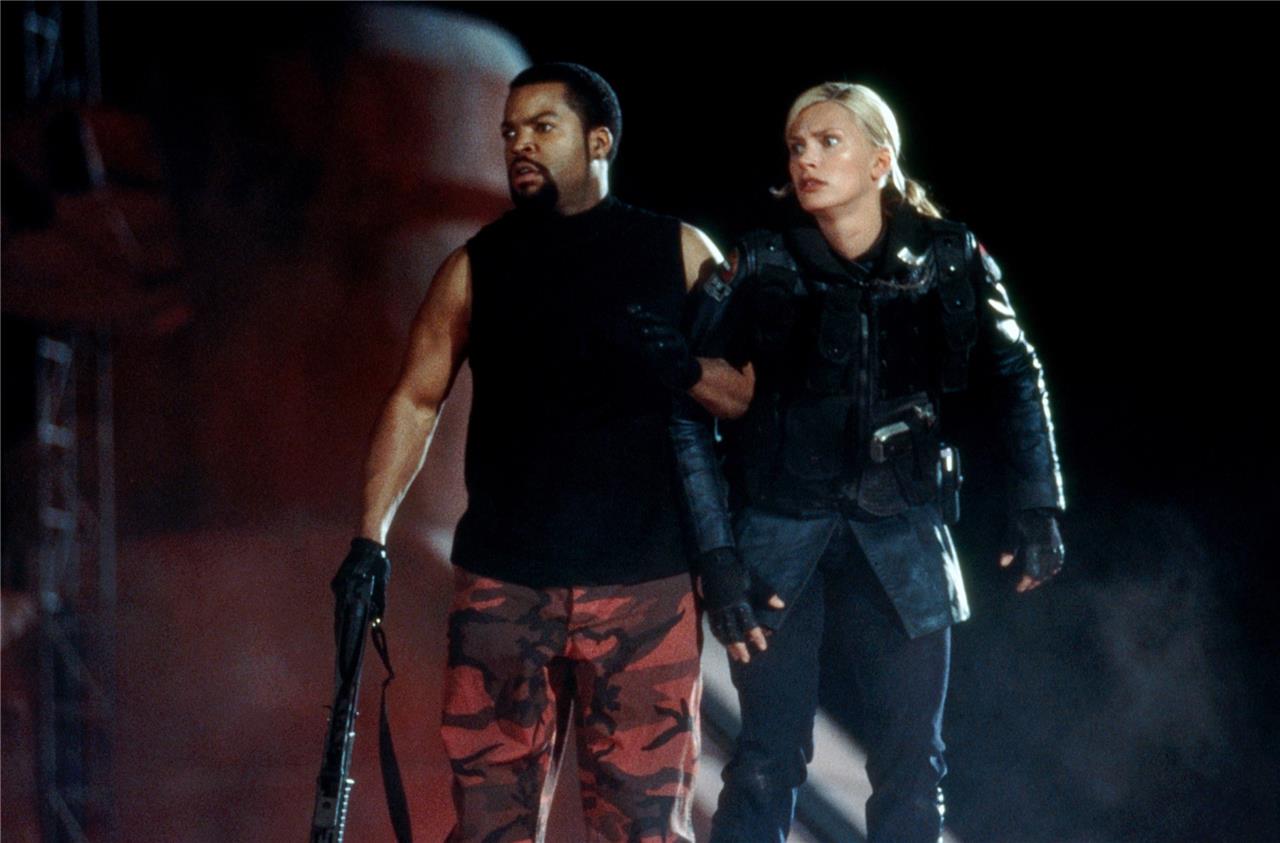
Most 2000s thing about it: Ice Cube’s character is named “Desolation Williams.”
Where to watch: Free with ads on the Roku Channel, or for digital rental/purchase on Amazon, Apple TV, Fandango
All of John Carpenter’s movies have a delightful B-movie flair to them. But Ghosts of Mars takes the cake in the category. It’s a pseudo-Western on Mars with an all-star cast, including Ice Cube, Pam Grier, and frequent flopbuster star Jason Statham.
The premise is great and allows for a lot of Carpenter narrative creativity: When a freight train on a mission to pick up a prisoner (Ice Cube) returns with only one survivor (Natasha Henstridge), she is interrogated about the series of events, unfolding through a series of interweaving flashbacks.
The performances are strong, and Carpenter scores the movie well as always, but the real strength of Ghosts of Mars is right there in the title. The Martian atmosphere is extremely spooky, and the red tones of the planet’s surface are gorgeous, an effect created by dyeing the gypsum mine they filmed in with red coloring. –Pete Volk
Equilibrium
Equilibrium is a 2002 sci-fi film that stands out as a quintessential 2000s-era flopbuster, blending dystopian themes with stylish action. Set in a future where emotions and artistic expression are outlawed and citizens must take drugs to suppress feelings, Christian Bale stars as John Preston, an enforcement officer who begins to rebel after missing a dose. The film is notable for its inventive “Gun Kata” combat style, reminiscent of The Matrix, and its exploration of authoritarian control through a visually distinctive blue-gray palette that shifts with moments of emotional awakening. Despite its initial critical and commercial failure, Equilibrium has gained appreciation for its unique premise, intense action sequences, and thought-provoking narrative on freedom and conformity.
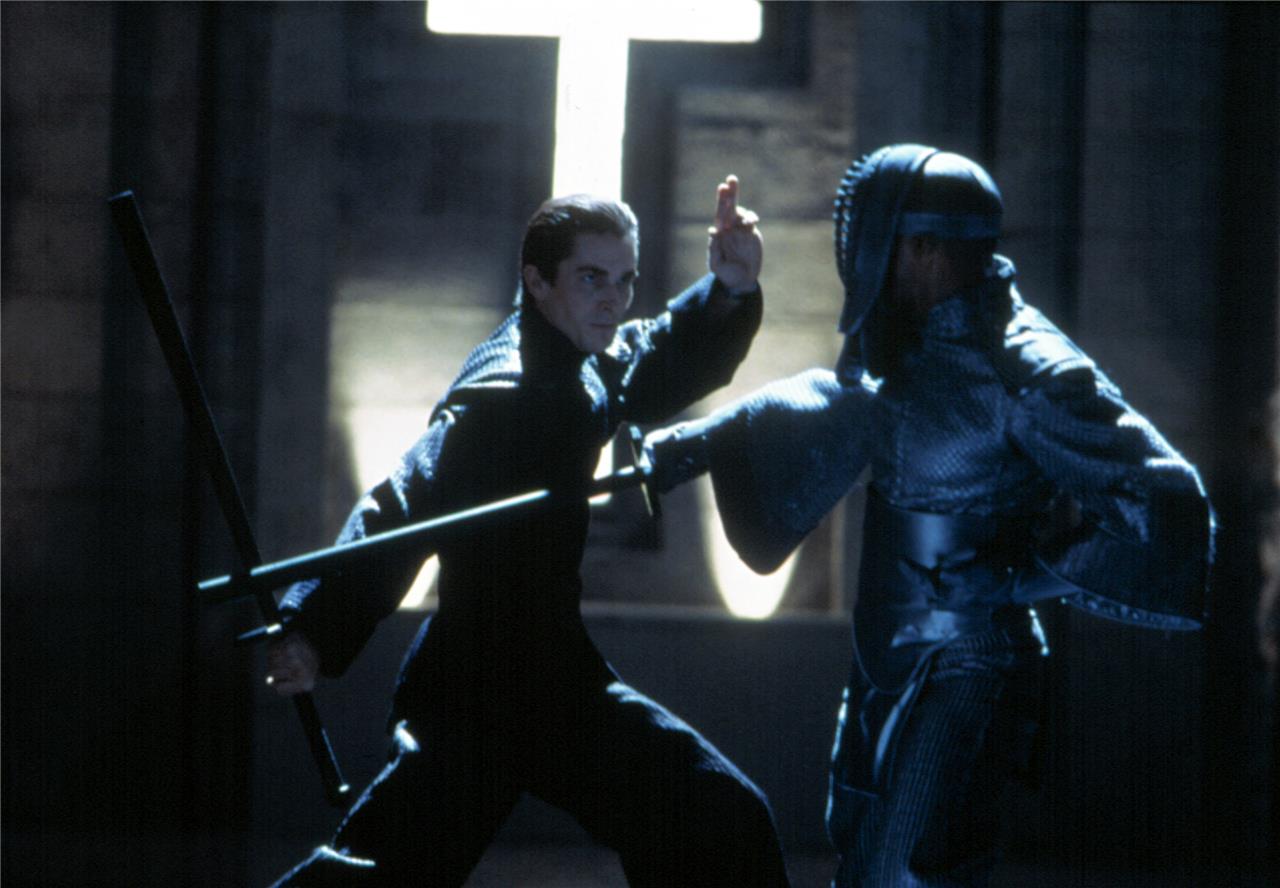
Most 2000s thing about it: Gun Kata.
Where to watch: Free on Hoopla, or for digital rental/purchase on Amazon, Apple TV, Fandango
This entire trend in Hollywood owes its life, and its budgets, to The Matrix, but few movies on this list took that inspiration as seriously as Equilibrium. The movie is a pretty blatant rip-off, but I say that with nothing but love in my heart for it. Equilibrium takes place shortly after the end of World War III, in a city where emotion and art have been outlawed entirely. However, when John Preston (Christian Bale) suddenly finds a book of poems by W.B. Yeats, he discovers his own emotions and decides to fight back against and destroy the fascist government that has stripped people of the ability to feel.
To do all this rebelling, Preston has to call upon his mastery of Equilibrium’s most incredible invention: Gun Kata, a gun-based martial art that is equal parts extremely silly and totally sick. All of Equilibrium’s shootouts and fights scenes involve Preston pulling off incredible feats with guns, doing Matrix-style wire work while shooting dozens of rounds a second out of his semiautomatic pistols, or beating people to death with retractable gun spikes. It’s all bizarre and incredible, and in certain ways feels like a precursor to the John Wick style that dominates action movies today. The exceptionally ridiculous Gun Kata action, combined with one of the bigger and more well-thought-out worlds on this list, makes Equilibrium an absolute flopbuster classic. –Austen Goslin
Paycheck
Paycheck is a 2003 sci-fi action film directed by John Woo, starring Ben Affleck as Michael Jennings, a reverse engineer who takes on a high-stakes three-year project for a tech company, only to have his memory wiped afterward. As Jennings pieces together clues from items he secretly left for himself, he uncovers a machine that can see into the future, leading to a tense battle to prevent catastrophic consequences. Despite its ambitious premise and action-packed plot, Paycheck was a commercial flop but remains a notable example of early 2000s sci-fi exploring themes of memory, technology, and fate.
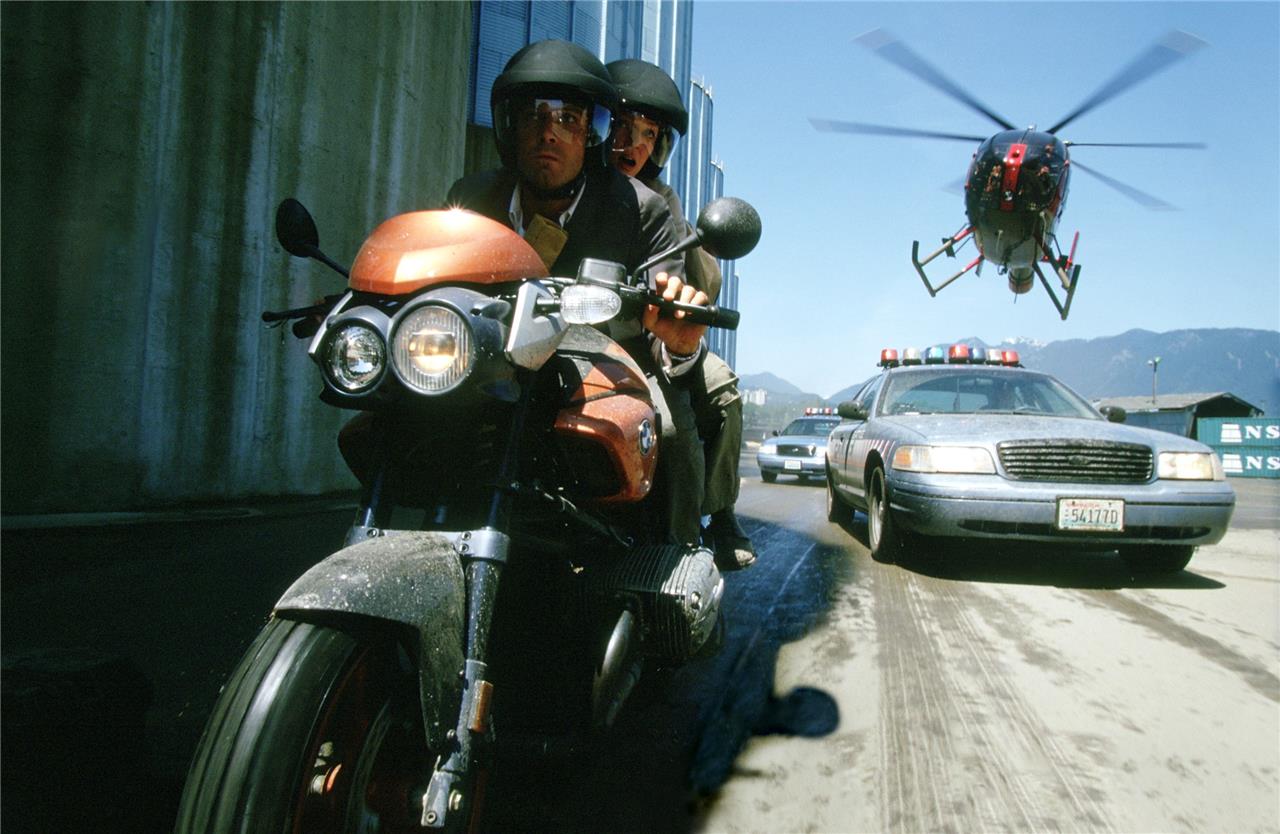
Most 2000s thing about it: Matt Damon turned down the lead part because he had just done an amnesia role with The Bourne Identity.
Where to watch: For digital rental/purchase on Amazon, Apple TV, Fandango
Even many of my fellow John Woo die-hards won’t go to bat for this one. The movie that led to Woo’s temporary exile from Hollywood filmmaking, Paycheck is based on a Philip K. Dick story and follows a highly skilled engineer (Ben Affleck) whose work is so secretive that he gets his short-term memory wiped after every job. But when a job goes wrong, he has to try and retrace his own (forgotten) steps to get to the bottom of a mystery.
I remember seeing this movie for the first time on cable when I was in high school, and I fully believe that’s the best way to watch Paycheck (on TV, with commercials. high school might be harder to recreate). And yes, it does have one of John Woo’s trademark doves. –PV
The Chronicles of Riddick
The Chronicles of Riddick, the 2004 sequel to the cult hit Pitch Black, ambitiously expands the story of Vin Diesel’s antihero Riddick from a gritty survival thriller into a sprawling space opera. Despite its negative reviews and box office disappointment, the film is notable for its elaborate production design and the introduction of the fanatical Necromonger empire, blending sci-fi action with dark religious overtones. While the movie’s mix of serious themes and campy elements divided critics, it remains an entertaining example of 2000s sci-fi excess, with standout performances from Diesel and Colm Feore as the menacing Lord Marshal. The film’s middle act, featuring Riddick’s daring escape from a volcanic prison planet, is often highlighted as its strongest sequence. Though flawed, The Chronicles of Riddick holds a nostalgic appeal and is worth revisiting for fans of the era’s ambitious but uneven sci-fi blockbusters.
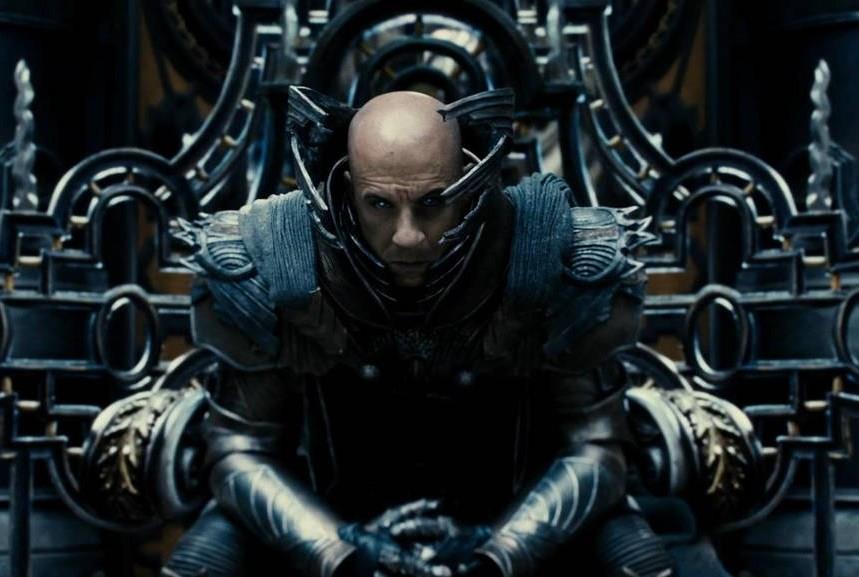
Most 2000s thing about it: The fact that the best version of the character only exists in the Xbox tie-in game.
Where to watch: Prime Video or Starz
Perhaps the best example of this trend, The Chronicles of Riddick is a sequel to Pitch Black, a wonderful sci-fi slasher that’s something like Alien, except if the xenomorph was played by Vin Diesel and he was sort of a good guy. But while the first movie is low-stakes and even lower-budget, the second movie blows the whole thing out to a universal scale.
While we last saw him as a space outlaw on a backwater planet, when we next catch up with Richard B. Riddick, he’s pulled into a conflict with an intergalactic empire. The series pulls off its turn toward space opera surprisingly well, building out a whole spacefaring civilization that feels straight out of Warhammer 40K, complete with massive armor and weapons, a giant capital city, and incredibly convoluted lore. All of this is presented with a terrific blend of seriousness and camp, and while Riddick caring this much about the fate of the universe never quite makes sense, it is one of the most entertaining examples of Hollywood’s sci-fi excess you can find. –AG
Death Race
Death Race
The Death Race franchise began with the 1975 cult classic Death Race 2000, a dystopian sci-fi action film set in a future America where a brutal transcontinental road race entertains a violent society by awarding points for running down pedestrians. Starring David Carradine and featuring a young Sylvester Stallone, the film combined over-the-top violence, dark satire, and campy humor to create a unique cult hit that influenced many later dystopian works. The franchise was rebooted in 2008 with a grittier, high-octane take starring Jason Statham, focusing on prisoners forced to compete in a deadly race for their freedom, blending intense vehicular combat with a dystopian prison setting. Despite mixed critical receptions, the Death Race series remains a standout for its blend of sci-fi, action, and social commentary, embodying the wild, adrenaline-fueled spirit of 2000s-era sci
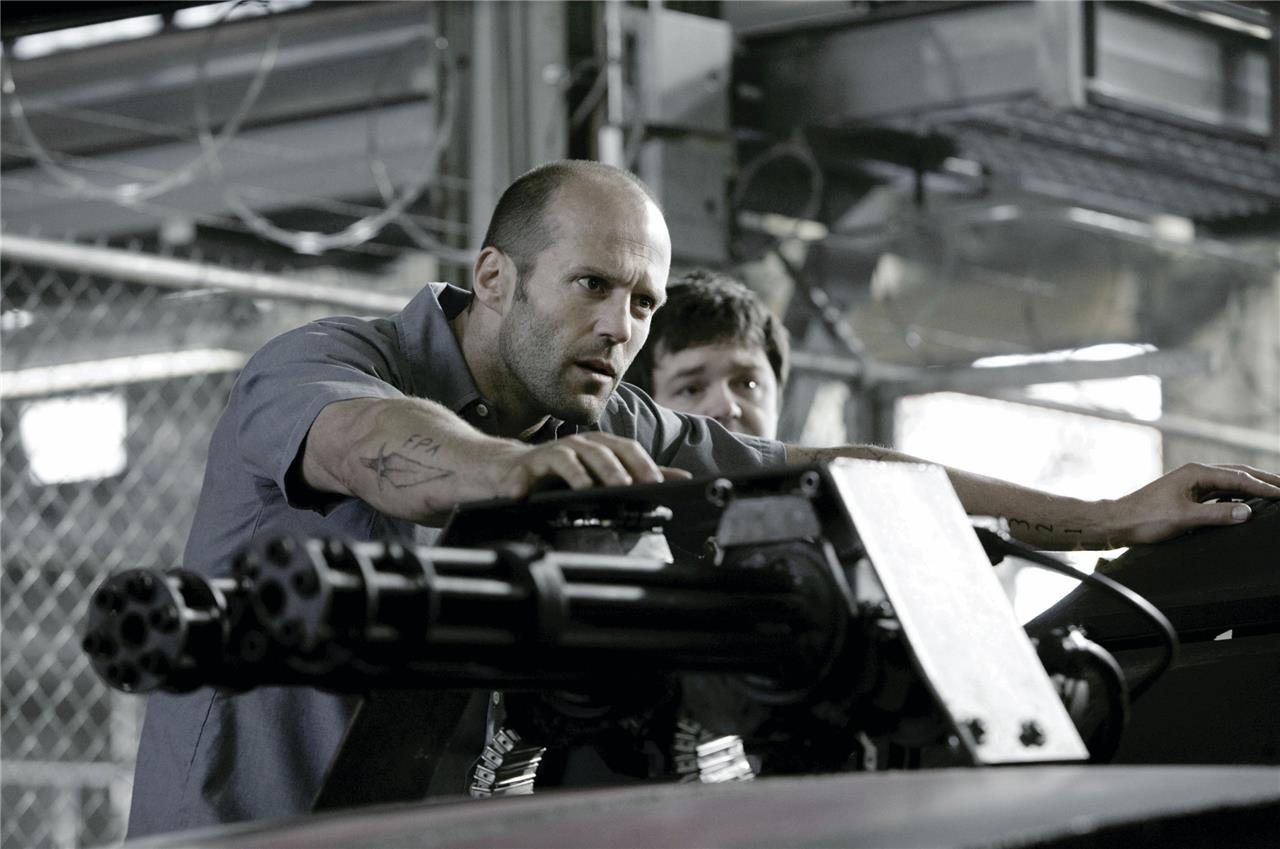
Most 2000s thing about it: Roger Ebert called it “an assault on all the senses, including common.”
Where to watch: Max, or for digital rental/purchase on Amazon, Apple TV, Fandango
If there’s anything that makes more sense than video games as Paul W.S. Anderson adaptation material, it’s a Roger Corman movie. The 2008 Death Race updates the great premise of Corman’s cult classic – prisoners compete in a deadly race to try and earn their freedom – and amplifies the vehicular action with some terrific car stunts and flips. You will truly feel the presence of Hollywood car action maestro Spiro Razatos, best known for his work on the Fast and Furious franchise.
So many of Anderson’s movies would fit in this category: the (very good!) Resident Evil movies, Alien vs. Predator, and even some of his newer movies that don’t belong to this specific era. A key element of the mid-2000s flopbuster is a lack of embarrassment over the nerdy stuff in the material, and throughout his decades making video game adaptations and other seemingly silly projects, Anderson has never once flinched. He knows what you’re here for, he knows what he’s here for, and he delivers.
All the 2000s flopbuster notes are here: plenty of CGI to build out the largely gray environments of the prison and the racetrack (but also for some grisly deaths), a villain whose plan makes no sense and whose motivations seem to flip on a dime, and a goofy, violent, fun time in a surprisingly well-realized dystopia. –PV
Doomsday
Doomsday (2008) is a cult-favorite post-apocalyptic sci-fi action film set in a future where a deadly virus has quarantined Scotland behind a massive wall, turning it into a lawless wasteland. When the virus resurfaces in London, Major Eden Sinclair leads a daring mission into this chaotic zone to find a cure, encountering brutal gangs and a society that has regressed into violent tribalism. Though critically panned for its uneven tone and logical gaps, the film embraces over-the-top action, blending influences from Mad Max and Escape from New York with punk aesthetics and gladiatorial combat. Its fast pace, stylized violence, and campy charm make Doomsday a distinctive, entertaining relic of 2000s sci-fi flopbusters worth revisiting for fans of bold, unapologetic genre mashups.
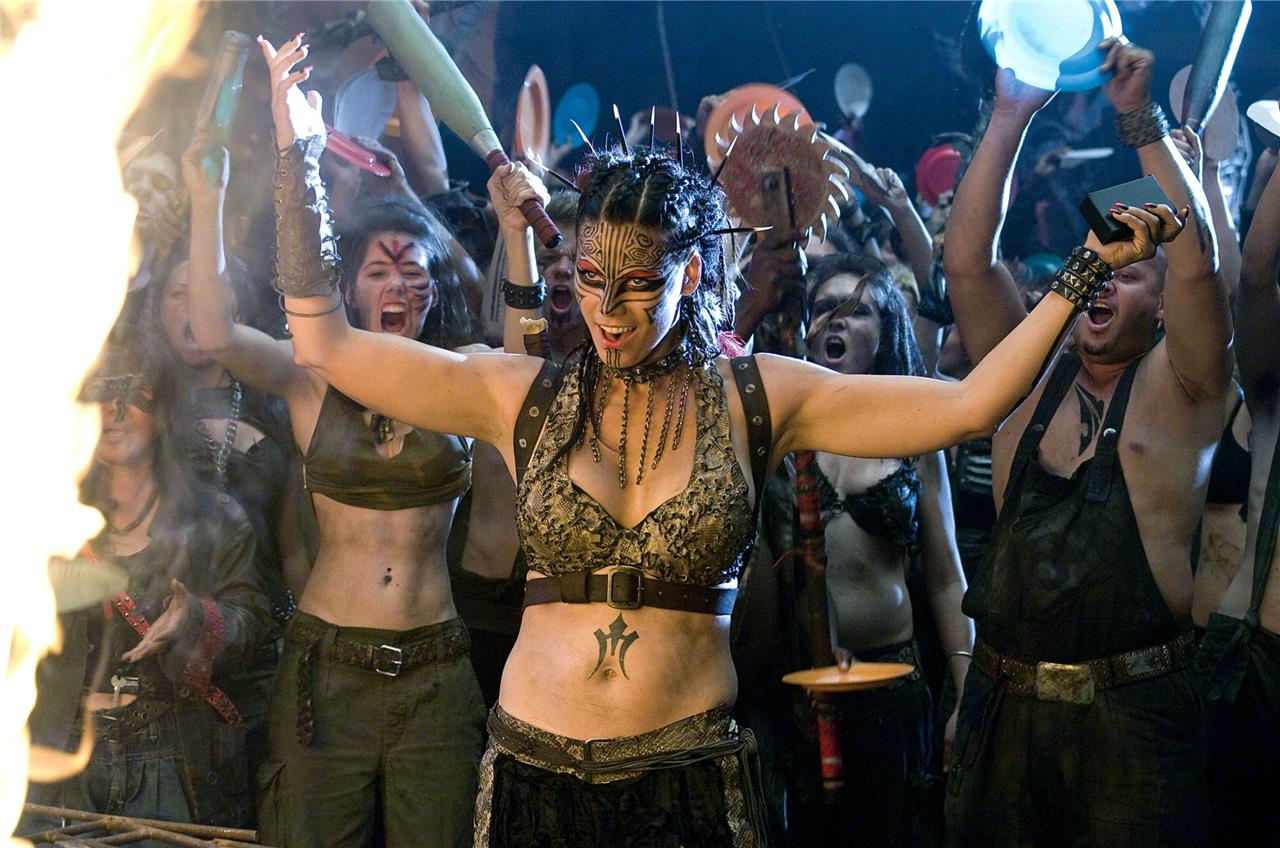
Most 2000s thing about it: The villain dresses like The Prodigy’s Keith Flint with a big ol’ biohazard symbol tattooed on his back.
Where to watch: For digital rental/purchase on Amazon, Apple TV, YouTube
If your idea of a good time is listening to Malcolm McDowell ominously monologuing over a faux-John Carpenter synth score and post-apocalyptic motorbike rallies that function like Burning Man meets Cirque du Soleil, then boy, do I have a movie for you! Doomsday was critically panned when it was released back in ’08 as a derivative and uninspired riff on Mad Max and Escape from New York. And while this is true, it does very little to detract from its appeal as a damn satisfying, albeit very cheesy, action movie.
Rhona Mitra kicks all kinds of ass as Major Eden Sinclair, a special ops soldier with a drone camera for an eye who is sent on a mission into a quarantined Scotland in search of a cure for a deadly super virus. Don’t focus too much on the plot. Instead, just soak in the gloriously over-the-top violence, gladiatorial spectacle, and at times shockingly striking cinematography and lighting. Hell, the climax even essentially boils down to an all-out road war, complete with leather-bound, man-eating ravers and slow-motion explosions. What’s not to like? –Toussaint Egan
Daybreakers
Daybreakers
Released in 2009 and directed by the Spierig Brothers, Daybreakers is a dystopian sci-fi action-horror film set in a future where vampires dominate society but face a critical blood shortage. Ethan Hawke stars as a vampire hematologist racing against time to find a blood substitute, while Willem Dafoe plays a former vampire who believes he has discovered a cure that could save both humans and vampires. The film stands out among 2000s vampire movies for its stylish world-building and a premise that blends horror with science fiction, earning praise for its substance and cast despite mixed reviews. It offers a unique twist on vampire lore with a corporate-controlled dystopia and a gripping action thriller narrative.

Most 2000s thing about it: Action/horror vampires.
Where to watch: Free with ads on The Roku Channel or on the CW app, or for digital rental/purchase on Amazon or Apple TV
Vampires were all the rage in the 2000s, and while it’s tempting to credit Twilight with the whole thing, it’s important to remember that it really started with Blade in 1998, then the Underworld movies (which would be on this list had they not made as much money and as many sequels as they did) kept the bloodsuckers alive long enough for Bella and Edward to give them a second life. Amid all of that, though, were half a dozen or so smaller vampire movies of various genres. But not a single one of the vampire movies from this era was as big or bold as Daybreakers.
Daybreakers takes place in a post-apocalyptic world ruled by vampires. Ethan Hawke plays a vampire hematologist who’s trying to solve for the fact that now that vampires rule the world, the world’s running out of blood to drink. In the middle of his research, he comes across a former vampire named Elvis (Willem Dafoe), who thinks he has a cure for vampirism that could save humanity, and maybe the vampires, too. From there, the movie turns into a pretty great little action thriller in a fascinatingly drawn world. Think Children of Men (a movie that could also be on this list but is simply a little too good for it) but with vampires and Willem Dafoe. –AG
Gamer
Gamer (2009) stands out as a quintessential 2000s sci-fi flopbuster, marked by the chaotic and frenetic visual style of directors Mark Neveldine and Brian Taylor, known for their work on the Crank series. The film explores a dystopian future where death row inmates are controlled by gamers in a real-life third-person shooter, blending intense action with a prescient satire on virtual reality. Gerard Butler stars as the most skilled inmate, teaming up with a teenage gamer (Logan Lerman) in a desperate bid for freedom. The over-the-top villain, played by Michael C. Hall, adds to the film’s distinctively 2000s flavor, making Gamer a memorable, if underappreciated, example of the era’s ambitious yet flawed sci-fi cinema.
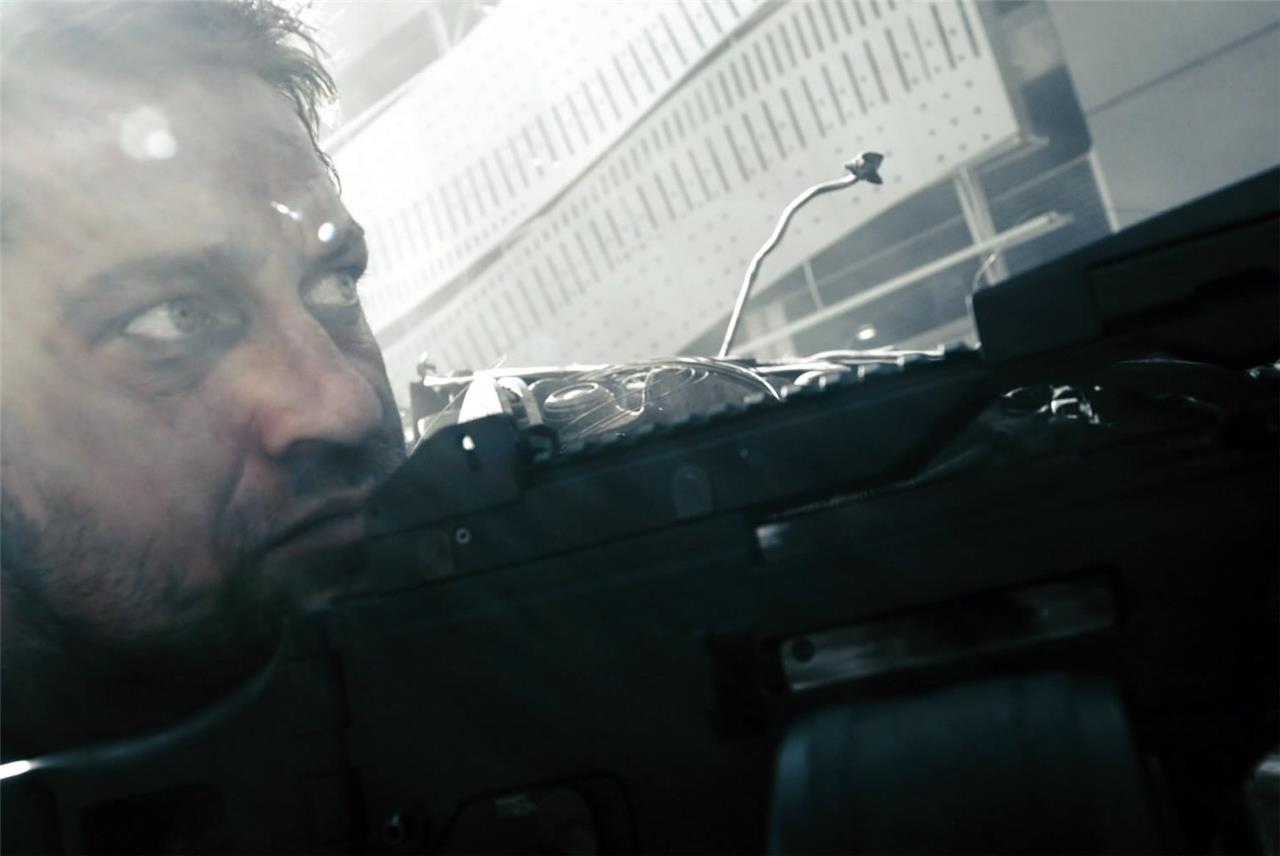
Most 2000s thing about it: The Neveldine/Taylor style of chaos cinema editing.
Where to watch: Peacock, or for free with ads on Pluto TV
During their six years making movies together, onetime filmmaking duo Mark Neveldine and Brian Taylor made some of the most chaotically shot and edited movies of the century. This is a good thing: The Crank movies, their Ghost Rider sequel, and Gamer are all among the most visually distinct movies of their generation, with a palpable energy underneath the frantic editing style.
In this one, prisoners on death row compete in a third-person shooter where they are the characters, controlled by gamers behind the scenes. The most popular and successful prisoner in this game (Gerard Butler) works alongside the teenager controlling him (Logan Lerman) to attempt to gain his freedom. Gamer was also ahead of its time when it comes to its satire of people’s time in virtual worlds, and features a delightfully over-the-top villain performance from mid-Dexter-era Michael C. Hall (that casting choice is a runner-up for most 2000s thing about Gamer). –PV
Priest
“Priest” (2011) is a post-apocalyptic sci-fi action film that blends elements of horror and western genres, embodying the distinct flavor of 2000s-era sci-fi flopbusters. Set in a dystopian world where humanity is at war with vampires, the movie follows a legendary warrior priest who defies church orders to rescue his kidnapped niece. Despite its ambitious mix of high-concept sci-fi and dark fantasy, “Priest” struggled to find commercial success but remains a cult favorite for its stylized action and atmospheric world-building, capturing the era’s penchant for genre mashups and bold, if flawed, storytelling. This film exemplifies the kind of unique but underappreciated sci-fi that defined the decade’s cinematic landscape.
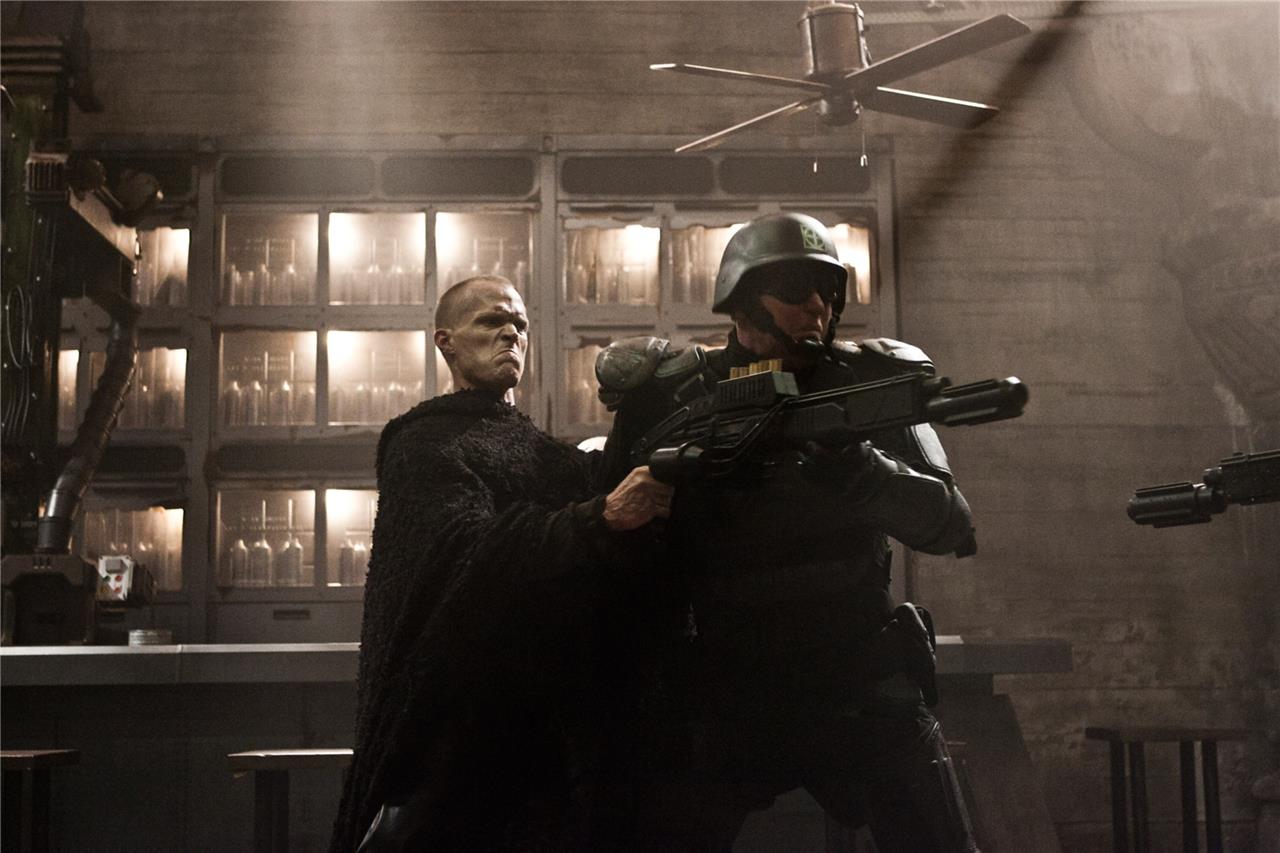
Most 2000s thing about it: A band of militant post-apocalyptic priests who are the good guys (also action/horror vampires).
Where to watch: USA Network, or for digital rental/purchase on Amazon, Apple TV, Fandango
Perhaps the wildest movie on this whole list, Priest is going to take some explaining. The movie is set in a world where humans and vampires spent hundreds of years at war, almost completely destroying the Earth’s surface. Finally, humans banded together in a theocratic society under the rule of The Church, which creates a specially trained group of warriors called Priests who can defeat the vampires.
When they do defeat the vampires, The Church rounds up the surviving monsters and puts them in special reservations, but then immediately begins to enact tyrannical totalitarian control over the remaining humans. To escape this, many humans move outside the safety of The Church’s walled city, where they’re more susceptible to bands of roaming vampire survivors. Living outside the walls long after the end of the last war, one particular Priest (Paul Bettany) finds his niece has been kidnapped by vampires, and he has to cross the post-apocalyptic landscape – mostly made out of gray CGI slop – to return to his vampire-killing ways. It’s among the most ambitious and fun premises on this list, and it mostly results in an excuse for some pretty kick-ass vampire-killing action, all of which makes this an excellent addition to the flopbuster canon. –AG
Dredd
Dredd (2012) is a gritty, violent sci-fi action film set in a dystopian future where police officers known as Judges act as judge, jury, and executioner in the sprawling Mega-City One. The story follows Judge Dredd and rookie psychic Anderson as they battle a ruthless drug lord, Ma-Ma, who controls a towering slum. Praised for its faithful adaptation of the comic source material, intense action sequences enhanced by the drug Slo-Mo’s slow-motion effects, and Karl Urban’s iconic portrayal of Dredd, the film has gained a cult following despite its initial box office disappointment. Its resurgence on streaming platforms has fueled calls for a sequel to explore more stories from the rich Dredd universe.
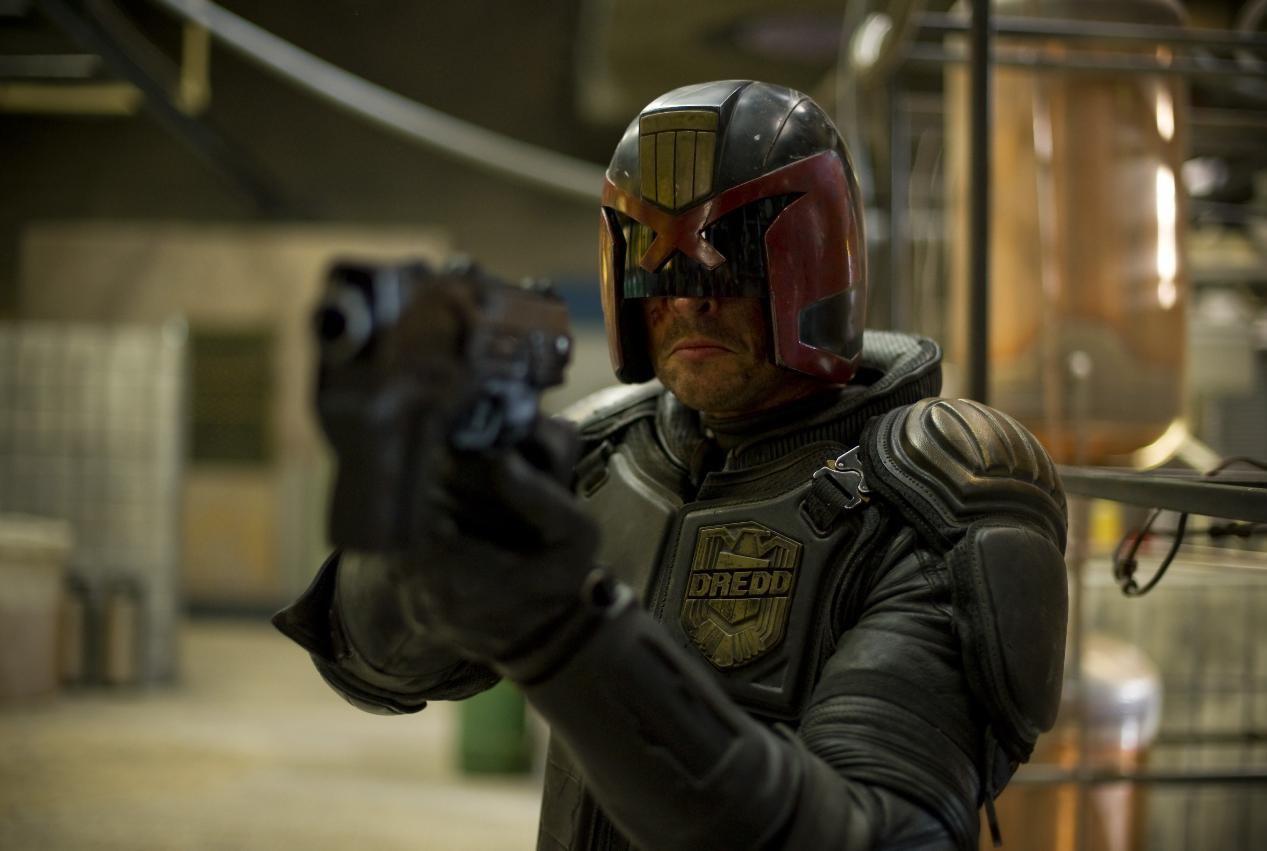
Most 2000s thing about it: A soundtrack consisting entirely of industrial music.
Where to watch: Max, or for digital rental/purchase on Amazon, Apple TV, Fandango
Another update of an existing franchise, the 2012 Dredd is a crisp sci-fi action movie equal parts The Raid (which happened to shoot almost simultaneously) and ’80s sci-fi throwback. Karl Urban stars as the violent Judge Dredd, on an assignment with his rookie partner (Olivia Thirlby) to take down a drug kingpin (mid-Game of Thrones Lena Headey, another strong casting-from-TV choice in this era that also qualifies as a runner-up for most 2000s thing about this movie) who rules over a skyscraping high-rise.
The verticality in the 200-story building allows for tense and at times shockingly violent action augmented by the visual effects (especially the slow-motion sequences), and the lead performances are all strong. There are plenty of gray tones within the movie, fitting with the era, but the kinetic direction and strong performances hold it all together. Of note: Pete Travis is credited with directing the movie, but Urban has made it clear screenwriter Alex Garland is the one who really directed Dredd. –PV
Could a reboot of 2000s sci-fi flops revive their cult status today
A reboot of 2000s sci-fi flops could potentially revive their cult status today, but success is far from guaranteed. While some reboots like Dune and Mad Max: Fury Road have redefined their franchises with critical acclaim and renewed fan interest, many sci-fi reboots face challenges in capturing the original’s charm or engaging modern audiences. The key to a successful reboot lies in updating the story and technology while respecting the core elements that earned the original its cult following, allowing fans to reinterpret and create new cultural meaning around the material.
Moreover, several 2000s sci-fi flops have already gained dedicated fanbases over time despite poor box office returns, suggesting a built-in audience that could be tapped into with a well-executed reboot. However, the mixed track record of reboots-some failing to resonate or feeling unnecessary-means that a reboot must offer fresh perspectives or improved production values to stand out rather than simply retreading old ground. In summary, a reboot can revive cult status if it balances nostalgia with innovation and leverages modern filmmaking advancements to reimagine the story for today’s viewers.
Can a modern reboot turn 2000s sci-fi flops into cult favorites today
A modern reboot can indeed turn 2000s sci-fi flops into cult favorites today, provided it balances nostalgia with fresh ideas and updated technology. The 2000s produced many ambitious and weird sci-fi films that initially underperformed but developed devoted fanbases over time, such as The Chronicles of Riddick and Death Race, which combined serious storytelling with campy, entertaining elements. Sci-fi as a genre is particularly well-suited for reboots because its core themes and speculative concepts remain relevant and ripe for reinterpretation with modern filmmaking techniques.
Successful reboots often reimagine the original material in ways that resonate with contemporary audiences while preserving what made the originals distinctive. Given that some 2000s sci-fi flops already have cult followings, a thoughtfully crafted reboot could amplify their appeal and introduce them to new generations. However, the reboot must avoid mere replication and instead offer innovation to stand out in today’s crowded entertainment landscape. Overall, with the right creative vision, a modern reboot can revive and even elevate the cult status of these once-flopped sci-fi films.
